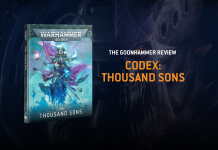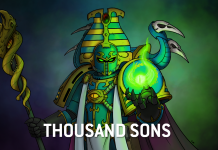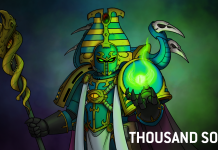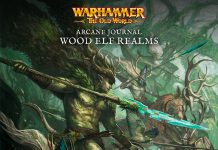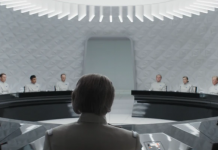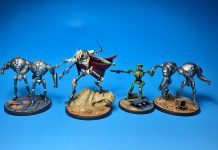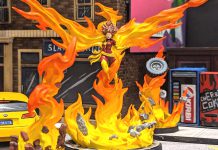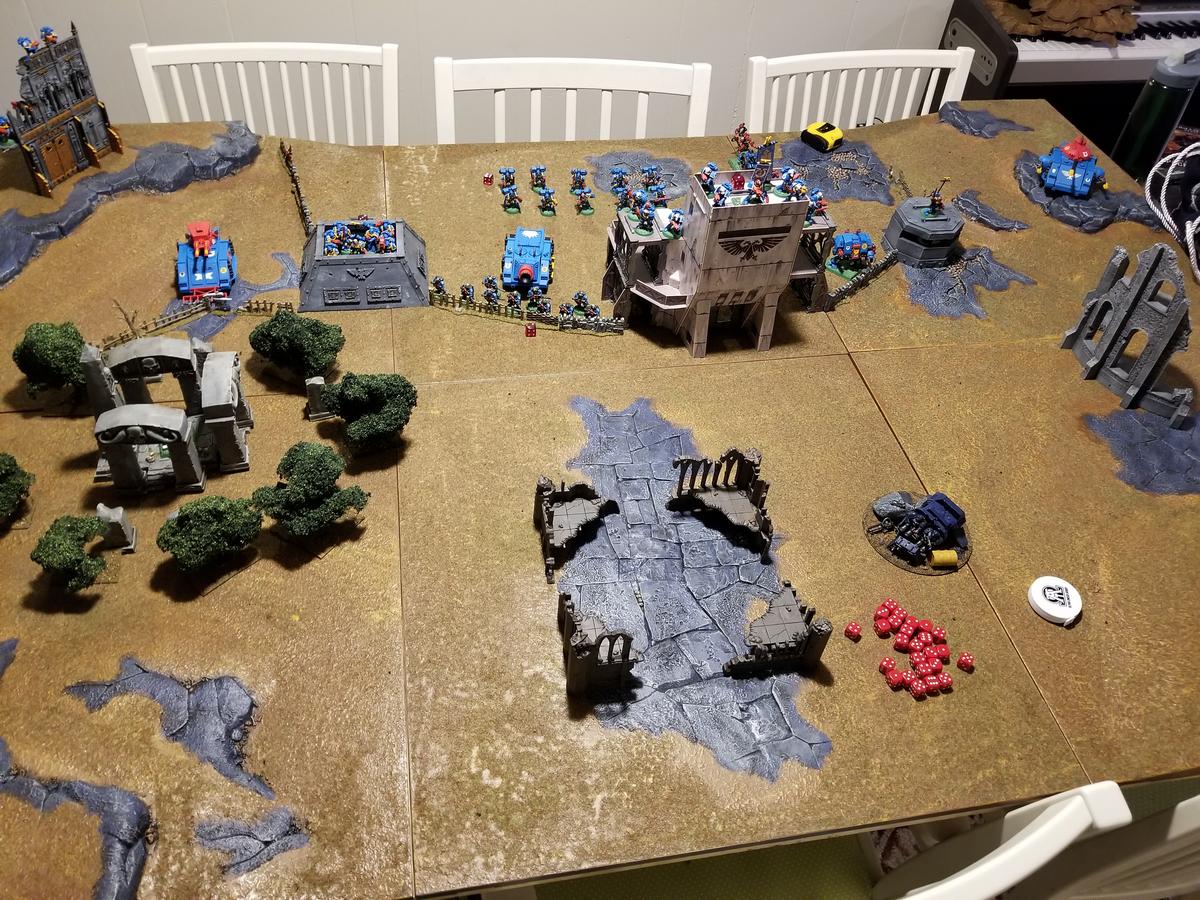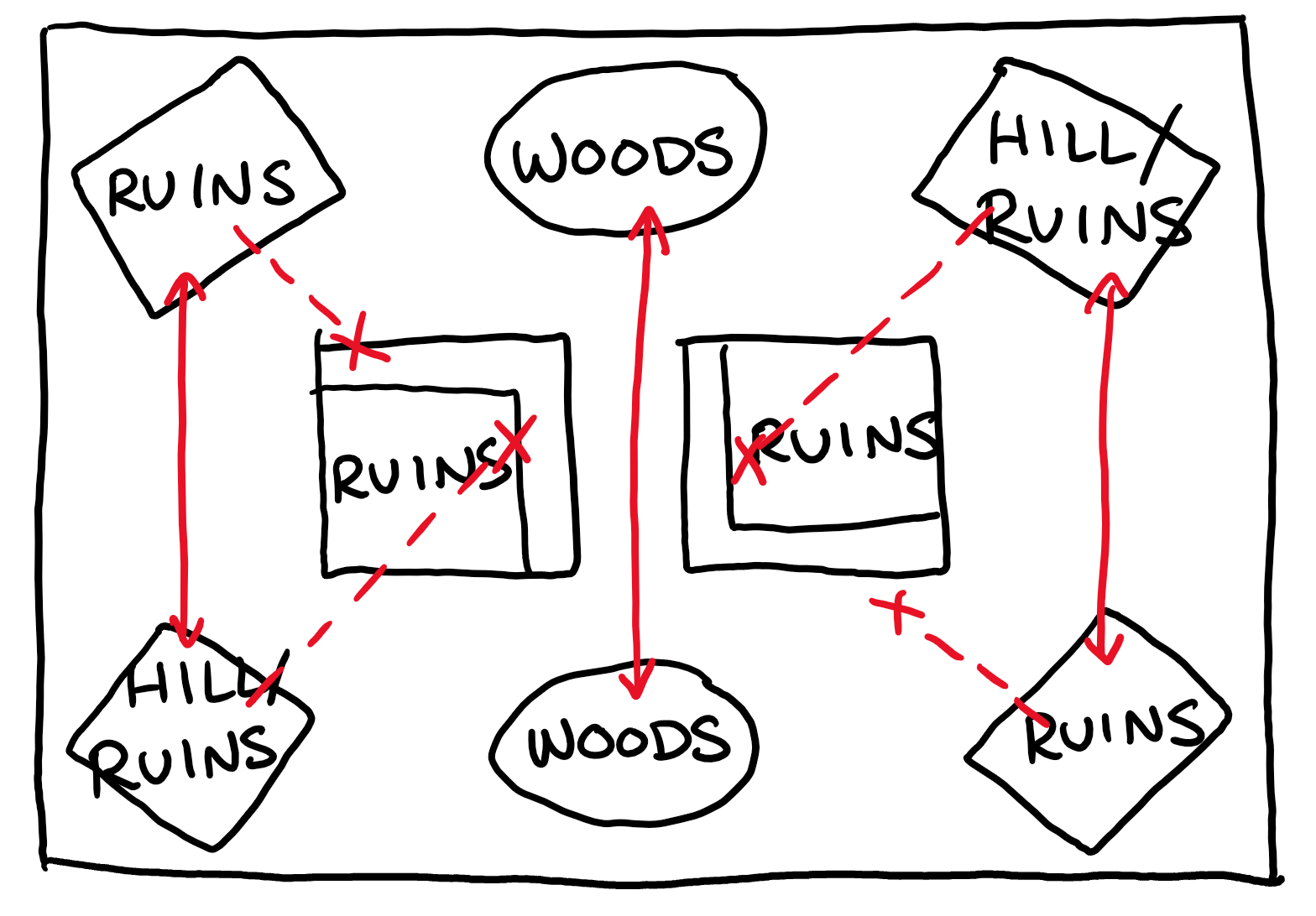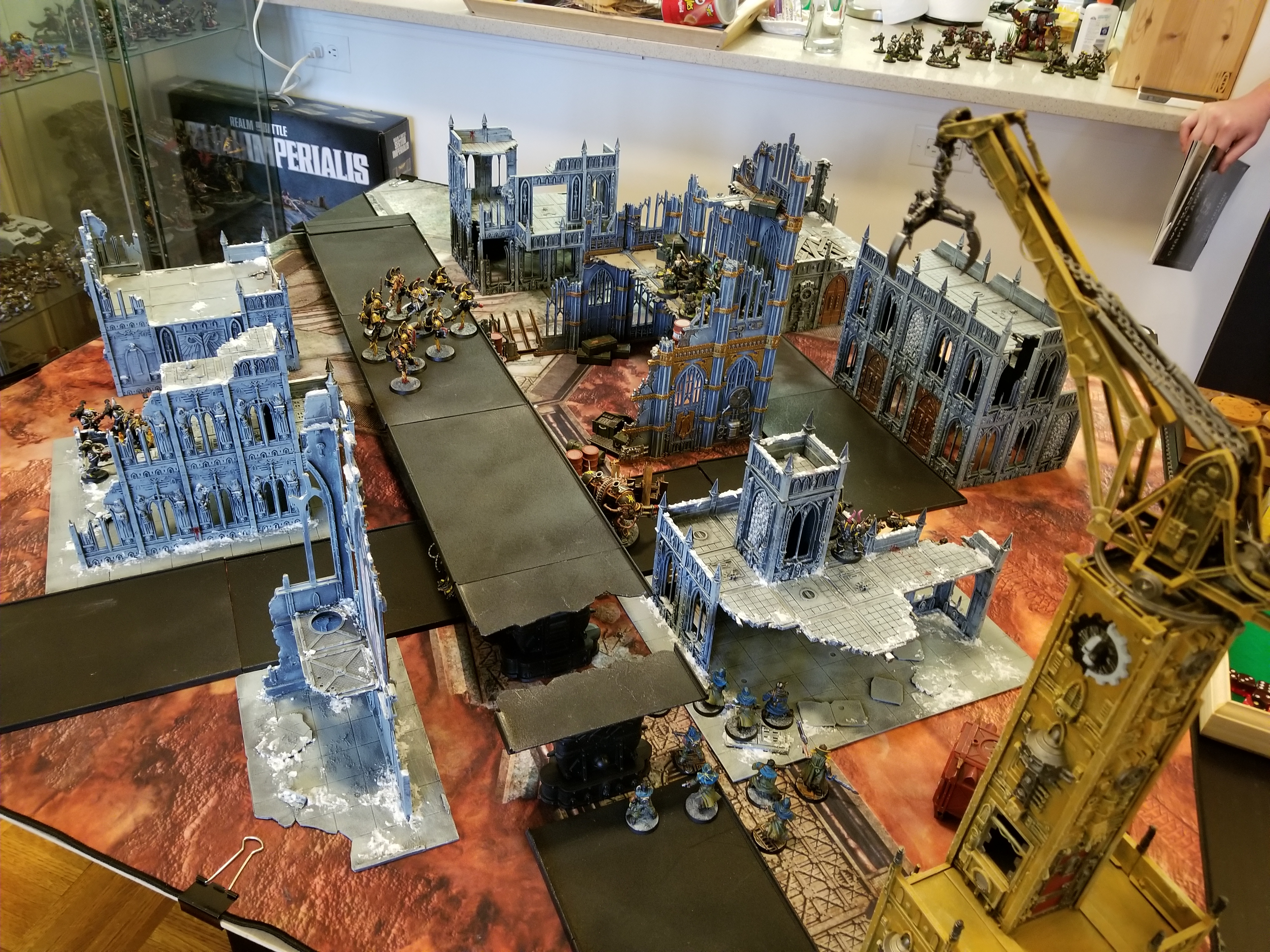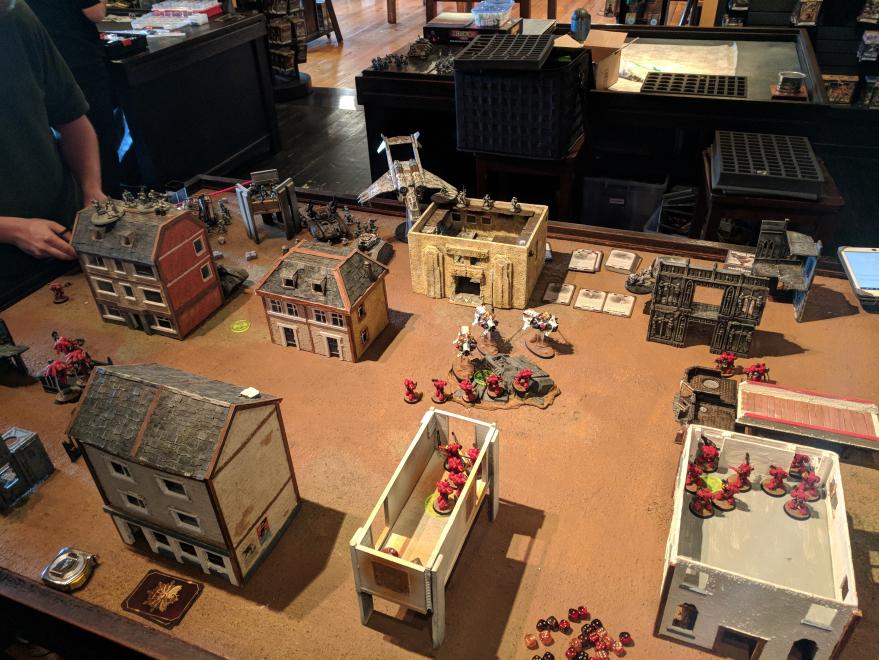You see it happen over and over: someone wanders into a channel or group talking about the awful time they just had playing against some jerk’s gunline army in what was supposed to be a casual, fun game of Warhammer 40k. And inevitably one of the first questions they’ll get will be something along the lines of “well, what did the table look like? Did you have enough terrain?”
Terrain is tricky in 40k, particularly in 8th edition. It’s an incredibly important part of the game, dictating how units can act, what they can interact with, and how likely the are to survive moment-to-moment. But it’s also an area where the game’s current ruleset feels a bit rough or unfinished. The rules for terrain features are buried deep in the 40k rulebook and away from the Core Rules, and the rules provide little guidance on how to actually set up a battlefield to ensure an enjoyable, fair contest between players. In this article, I’m going to go over the basics of terrain, talk about what makes a good table set-up, what we can learn from tournament table layouts (and how we can apply those lessons to casual games), and some thoughts on how you can use terrain set-ups to create certain types of games.
The Basics – Rules
I’m not going to sugarcoat it. The rules for terrain in 8th edition 40k are terrible. There are too many rules devoted to how the different types of pipe models that Games Workshop makes deal mortal wounds on saves, and not enough devoted to how models can be placed on top of ruins when their bases hang over the edge by 3″ or how to attack units on the second floor of a building. Note, I said building, I should have said ruin. Building rules… sort of don’t exist. Which again, is an issue. And the benefits cover provides aren’t quite enough. But terrain is a major factor in playing a game of 40k, and before before we dig into putting together a table, we should review the basic terrain rules in 40k. First, let’s start with the Core Rules on Terrain and Cover:
If a unit is entirely on or within any terrain feature, add 1 to its models’ saving throws against shooting attacks to represent the cover received from the terrain (invulnerable saves are unaffected). Units gain no benefit from cover in the Fight phase.
The Advanced Rules further expand this, laying out 9 types of Terrain: Woods, Ruins, Craters, Barricades, Obstacles, Hills, Fuel Pipes, Battlescape, and Imperial Statuary, with specific rules on how different types of units interact with each and gain cover. Note that non-INFANTRY units can only receive the benefit of cover if they are both entirely on or within a terrain feature and also at least 50% of their model is obscured from the firing model. Let’s dig into the rules for these. If you want to follow along at home, these are in the “Advanced Rules” section of your rulebook, page 248. Note that of these, the Battlescape and Imperial Statuary are tied very specifically to specific terrain kits that are no longer being sold and they’ve also got pretty bad rules, so we’re going to skip over those for now and focus on the important ones that show up often in games:
- Woods and Craters – INFANTRY units that are entirely within a wood or crater get the benefit of cover, and non-INFANTRY can get the benefit of cover from Woods if they are entirely within a wood and also 50% obscured from the firing target. Also, units are slowed when they attempt to charge through these terrain features – units that charge and have one or more of their models move through a crater or woods has to subtract 2″ from its Charge distance. Woods and Craters are important terrain features for both giving cover to units but also for helping slow down assault units. Woods and Craters force these units to travel around them to avoid failing a crucial charge roll, and so will have a kind of “funneling effect” on movement for melee units.
- Ruins provide cover for INFANTRY units and non-INFANTRY units that are at least 50% obscured from the firing unit. Additionally, while they may have multiple floors, not every unit can end a move on one of the upper levels: For VEHICLE, MONSTER, and BIKE units, only those with FLY can end end their move on any level but the ground floor of a ruins. Ruins can often have multiple floors, so this is a big deal – it allows them to climb to better vantage points for shooting angles and, in cases where an INFANTRY unit can completely occupy the upper floor of a ruin, they may be able to protect themselves from assaults by leaving no space for an enemy infantry model’s base to fit.
- Barricades give cover to units on the other side of them from a shooting unit, so long as the unit’s models are within 1″ of the barricade. Also units can fight across them, and can make attacks at units within 2″ if they are.
- Obstacles are things like tanglewire and tank traps. Non-TITANIC units that Advance or Charge over obstacles halve the distance they move.
- Fuel Pipes work just like barricades, except that when a unit within 1″ of one makes a save of 7+ (basically gets a save that can only happen with the benefit of cover), its owner rolls a D6 and on a 1, the unit takes a mortal wound. Honestly, I’d just treat these like barricades in most games.
- Hills don’t do anything – they’re considered part of the battlefield and not a terrain feature.
Overall, these rules are a pretty big deal – for most units, receiving a +1 bonus to your armor save means a raw increase of about 17% in your chances of shrugging off enemy attacks. For some units, they’ll only get an armor save at all if they’re receiving the benefit of cover. And the impact that craters, woods, and obstacles can have on charging units means that depending on the terrain layout, a unit may be able to protect itself very well from an assault by hiding in the right spot. These are good things, though — we want the terrain in our games to matter! In any game of 40k, making the best use of cover to improve your units’ chances of surviving should be an important factor.
OK, so this is how terrain is defined in the rules, and this has consequences I’ll dive into later. But for now I want to discuss the broader types of terrain that aren’t covered in the rules, and how we actually think about them most of the time.
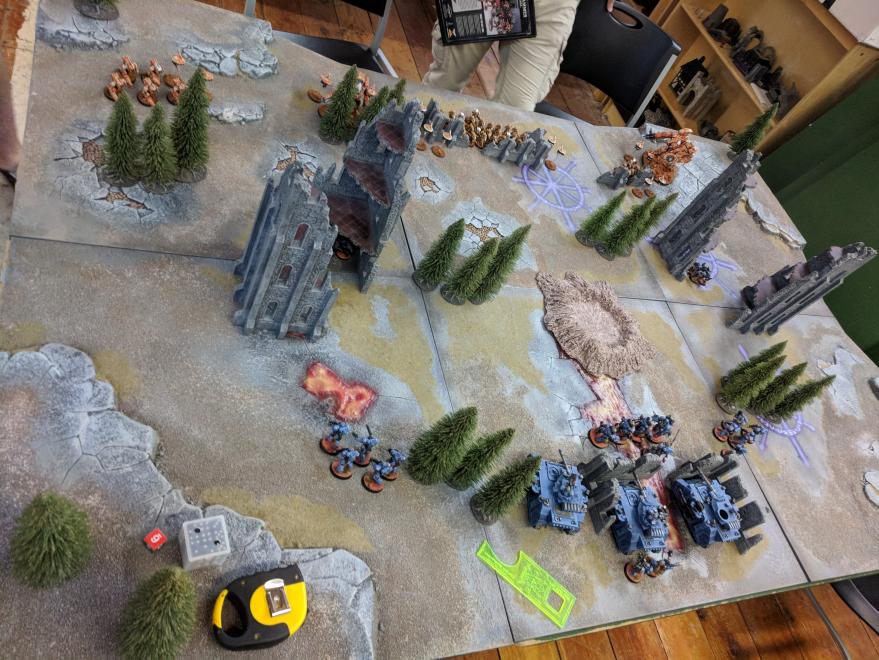
The Three Types of Terrain Feature
Fundamentally, I’d argue that terrain falls into one of three key categories:
- Line-of-Sight (LOS) Blockers – These are large terrain features with opaque surfaces that block Line of Sight through them, so that units on either side won’t be able to shoot through them.
- Cover /Area Terrain – These are terrain features that offer the benefits of cover to a unit, and are likely to actually hold a unit.
- Scatter Terrain – These are random objects that litter the battlefield and are designed to make things visually interesting, but may not actually do much.
Note that a terrain feature can be both an LOS blocker and also provide cover, particularly if it’s a large ruin with a base. Also note that, because of the rules in 8th edition 40k around terrain and line of sight, our LOS-blocking terrain has to either be functionally opaque, i.e. has no open windows or doors, or you need to have some kind of rule to prevent players from drawing a line of sight through it. The ITC tournament format handles this via a house rule, where the first floor of ruins are considered to block line of sight for all units. This is partly because creating large, flat walls on terrain is somewhat boring, and partly because most of the terrain everyone uses was built with the sensibilities (and rules) of older editions in mind, when cover functioned differently.
Similarly, when it comes to Cover terrain, we need to keep in mind that because of 8th edition rules, this type of terrain will either need to have a defined base that we can use for determining which units are entirely within or on the terrain feature, or we’ll need to work out before the game starts with an opponent what a piece of terrain’s imaginary boundaries are. Otherwise, the five trees we put down near each other aren’t a woods, they’re scatter terrain, and do nothing for anyone except make the table look nice.
LOS terrain is perhaps the single most important factor in setting up a table; being in cover boosts your chances of survival by 17%, being behind an LOS blocker increases it to nearly 100%. LOS blockers give players a way to protect their units, and so force both players to move and position their units to see around these features in order to take out enemy units. LOS blockers also give melee units a way to approach without being completely decimated or destroyed by enemy shooting. and LOS blocker terrain can also create movement lanes on battlefields that players can plan around.
Placing Terrain
Generally you’ll build a battlefield in one of three ways:
- One player sets everything up. This is pretty common for situations where one player is hosting, and can take the time to set things up before the other player arrives. If you do this, it’s generally good form to offer the opponent a chance to adjust things or at least approve the layout before you start deploying.
- Players alternate placing terrain. You see this more in pick-up games, where players will alternate putting terrain features on a table, usually one or two features per 2×2 square, with some final approvals. This method tends to be something players can agree on, but can often end up creating tables that don’t have enough terrain in the middle.
- A third party (such as the tournament organizer or a rando in a store) sets up terrain. Hopefully impartial.
Why Terrain Matters
Now you might be asking “but if the battlefield looks cool, why does this matter?” Well, terrain setup is one of the most important aspects of a 40k game, for a few reasons:
- Decreasing the impact of going first. Most players will agree that games are more fun when they’re close, or at least when the outcome is uncertain for a longer part of the game. It can often feel like a waste of time for one or both players to play a game where the outcome is decided on turn 1 and the decisions made by one or both players never mattered. By placing terrain to block line of sight and protect units by allowing them to sit in cover on the first turn, we can reduce the chances of one player’s turn 1 actions completely crippling or destroying their opponent’s army.
- Making a broader range of strategies viable. Open sight lines across the table create opportunities for long-range guns to pick off enemy targets before they have a chance to activate, and make it difficult or impossible for short-ranged or melee units to compete or carry out their assigned tasks. Not only does this make those units less viable, it biases play in favor of units and armies that have strong long-range firepower.
- Affecting movement. Depending on how the table is set up, some units may have more difficulty moving around, limiting where they can deploy or move during a game.
- Creating or reducing bias. Some terrain layouts can give one player or faction an inherent advantage, by allowing them to play to their strengths. Or an inherent disadvantage, by limiting their ability to function.
- Creating opportunities for interesting decisions. I’m a big fan of Sid Meier’s adage that “a game is a series of interesting decisions.” Good terrain layouts create more opportunities for interesting decisions in a game of 40k by forcing players to consider movement and placement, and navigate around obstacles. For example: Placing objectives outside of terrain features ensures that players will have to decide between protecting their units and capturing an objective, and when they’ll brave the open to do so.
What We Can Learn From Tournaments
I think that casual games can learn a lot from tournaments when it comes to terrain layout. In particular, the NOVA tournament format, which uses a prescribed terrain layout:
The NOVA Terrain Layout
This layout has some good things going for it! First, it’s symmetrical, which while not everyone’s preference, means that players don’t have to waste time rolling off for table edge and can start the game quickly from either side of the table. Second, it includes multiple terrain types – woods, raised hills (that also work like ruins to provide cover), and ruins that give units good places to hide and protect themselves from charging units. Third, it includes two large LOS blockers in the middle of the table, the so-called “NOVA Ls.” These large, based ruins block line of sight and channel movement through and around the middle of the table for many units, though note that INFANTRY can walk right through those walls like any other ruin.
Here’s an example of the format in action:
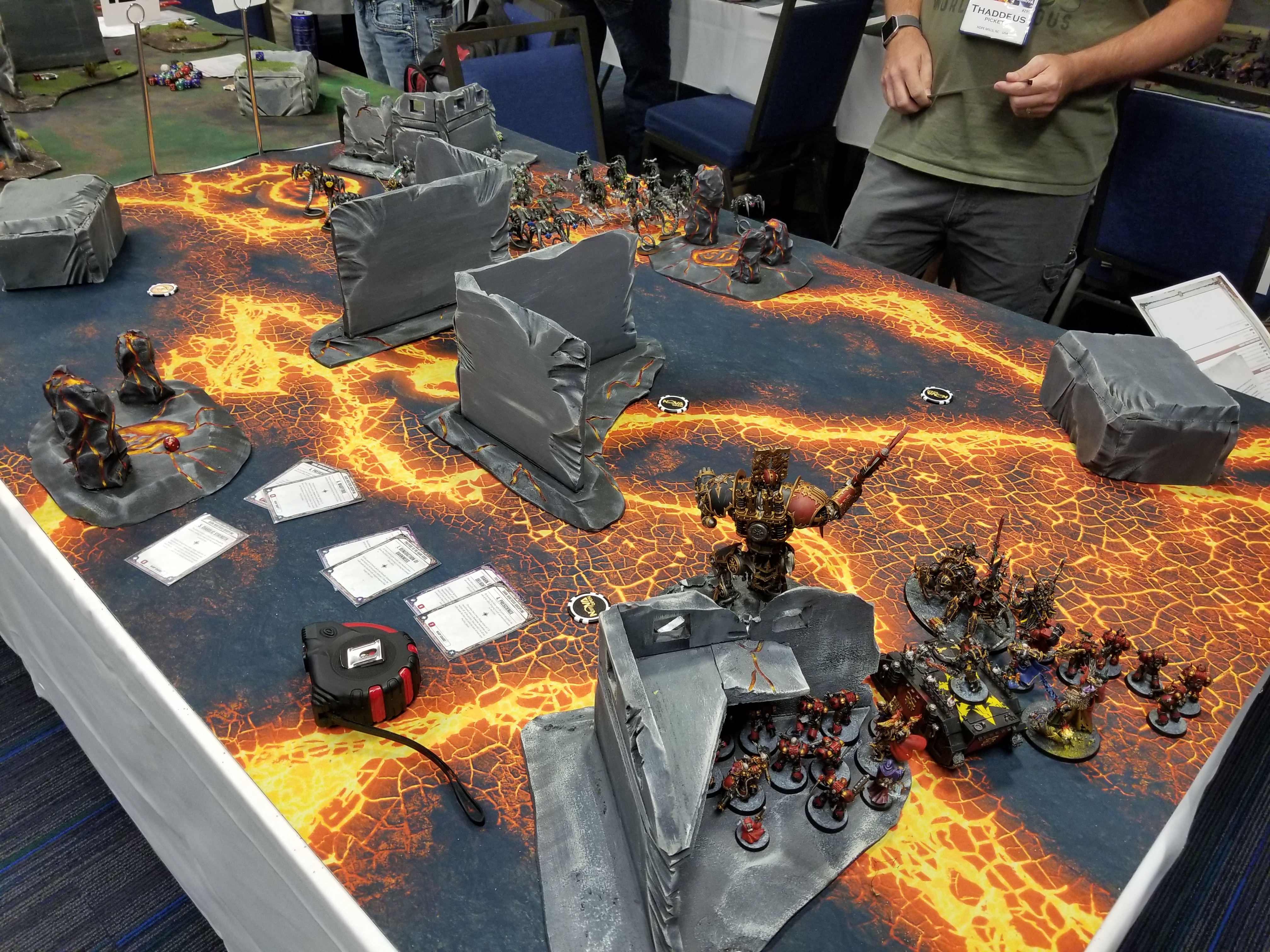
Note that while the NOVA terrain layout is planned to be symmetrical per table, not all tables are identical. The actual terrain used for the corner ruins and hills changes from table to table, and the bases on the Ls will vary as well – some hew close to the L shape like in the image above, while others use square bases.
The great thing about this layout is that it gives us good ways for blocking line of sight across the table while protecting the areas where we do have open firing lines by giving us cover-providing terrain to hide in. It also leaves lots of open lanes for vehicles to navigate around in. I tend to prefer a little more LOS-blocking terrain in the middle of tables for my casual games, but overall, this is a good layout!
Whether you’re building a terrain layout for a casual game between friends, a pick-up game in a store, or a competitive game in a tournament, you could do a lot worse than choosing to copy the NOVA terrain layout. Which is why the LGT chose to do something very similar for its terrain layout, and why we see similar terrain layouts at ITC events (though they don’t have prescriptive rules for terrain layout and have some wonky ideas about how ruins should work). The LGT layout now has standardized terrain, which I think was a great addition and gives them both smaller LOS blockers in each corner and some midfield cover that the NOVA layout lacks.
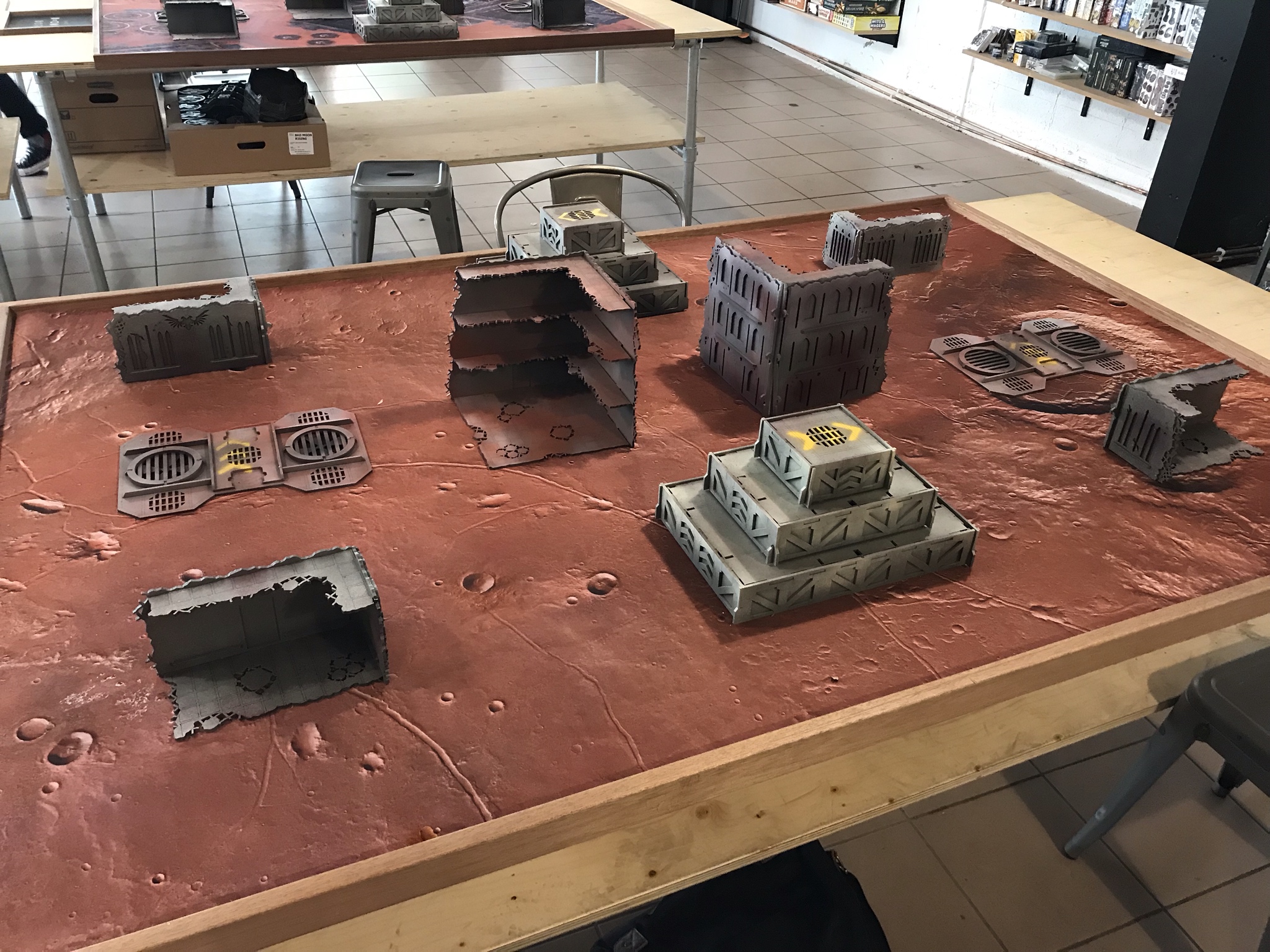
The Principles of a Good Terrain Layout
Alright, let’s distill this down to what we want to broadly achieve with terrain layouts:
- Tactical Symmetry. We don’t necessarily need the terrain to be symmetrical if we aren’t playing in a tournament game, but generally we want players to have an equal chance of winning regardless of which side of the table they choose. Which means we should be setting up terrain in a way that gives both players similar advantages and disadvantages regardless of which side of the table they end up on. While you’re placing terrain, try and set things up such that you think either player would legitimately consider selecting either side of the table for their deployment zone.
- Mitigated First Turns. We want to make sure that the terrain is set up to protect the player going second, or to at least give that player an opportunity to protect themselves in the event of going second, and ideally in a way that goes beyond just getting the benefit of cover for armor saves and allows them to hide some units. This will help ensure that the game stays competitive longer.
- Multiple Strategies Are Viable. We want multiple strategies to be viable on the table we create – we want shooting armies to have a chance and we want melee units to be able to cross the table without being completely obliterated. We also want to make sure there are open lanes of travel for vehicles, and areas where units can protect themselves from assault by using terrain creatively.
- Interesting Decisions Have to Be Made. We want our decisions to be more than just “Which unit shoots first?” and “What do I shoot at?” Terrain layouts should help create additional decisions to be made by players such as “Do I want to risk exposing myself to capture this objective?” and “Do I need to move back from my prime firing position to take cover?”
- Units Have Room to Maneuver. Units, even big vehicles, need to be able to move around the table in a way that isn’t completely at the mercy of the terrain. Make sure your table has multiple avenues for vehicle movement big enough to accommodate at least one Knight.
Most of the time, this means that we want 2-3 large, LOS-blocking features in the middle of the battlefield, and at least a few pieces of Cover-providing terrain around the battlefield, with multiple features in each player’s deployment zone to protect units in. We’ll want the cover to feel pretty “even” for both sides, and we want to create a few “protected” lines of movement across the table, and make sure that a unit sitting in any corner can’t see clear through to the opposite corner of the table.
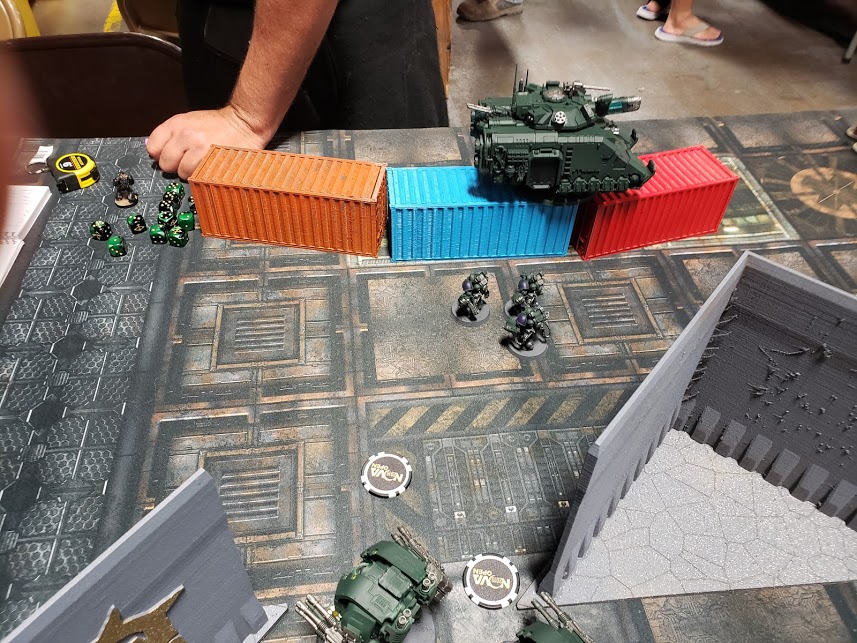
Placing Objectives
Objectives and terrain go hand in hand. Without going too deep here, I’d generally suggest that unless the mission or game type specifies it, you should try and do the following when placing objectives:
- Place no more than 1-2 in each player’s deployment zone and the rest in no man’s land, ideally equally far from each player.
- Try and place the majority of objectives outside of terrain features, so that players have to put their units in the open in order to capture objectives. This ensures that players have to make a decision between staying in cover and scoring points. Force players to be bold!
- If you placed your LOS blocker terrain right, no unit should be able to see more than 2-3 objective markers at a time, so that a player will have to move around to take out units holding objectives.
Things to Avoid
As you set up terrain, try to avoid the following:
Planet Bowling Ball. This dreaded planet is nearly devoid of terrain or features higher than a model’s waist. It’s the ideal world for Tau to murder things on. Nothing can hide here and if there is terrain, it’s mostly in a player’s deployment zone.
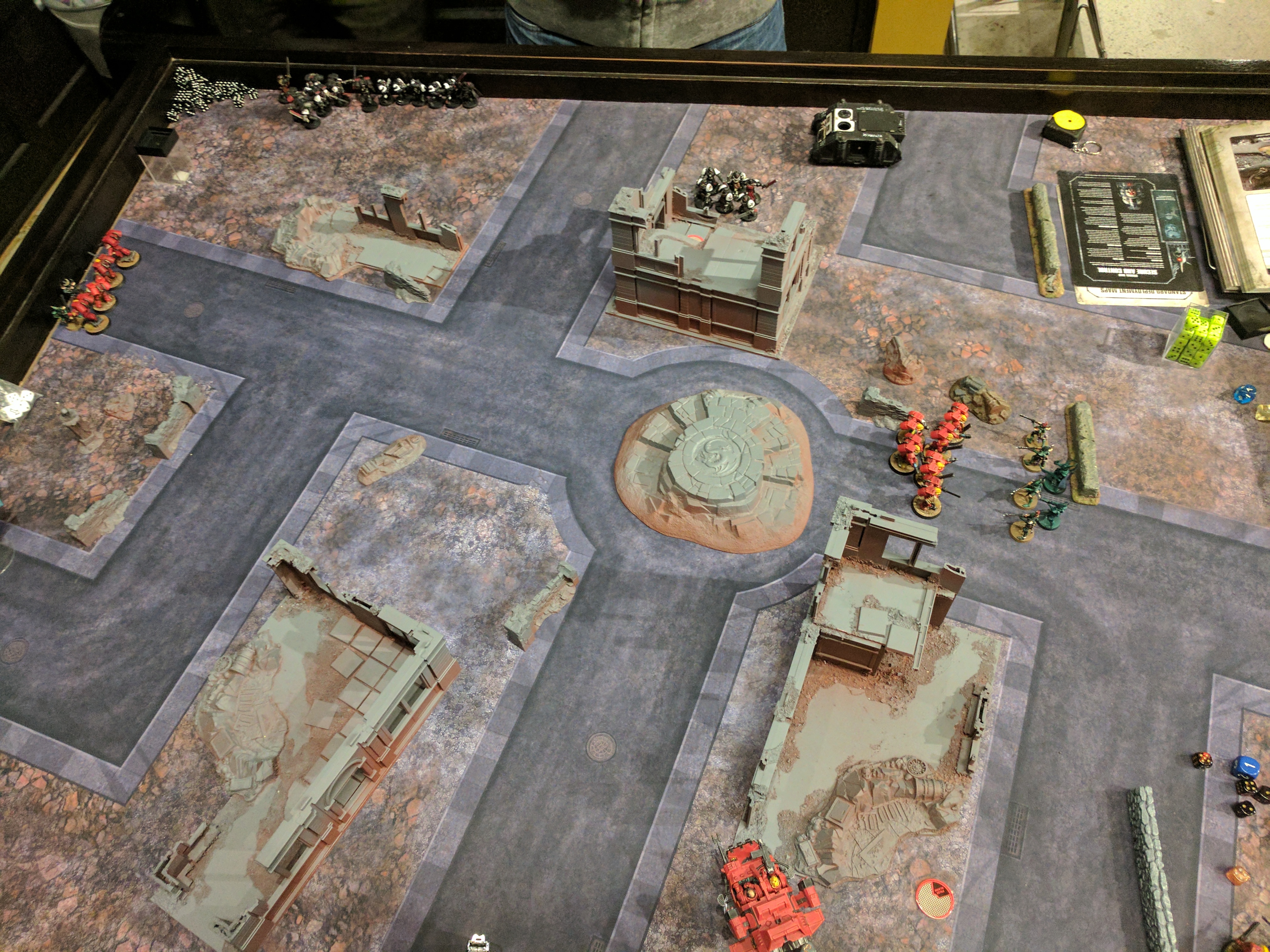
Overstuffed Tables. Too much terrain is better than not enough, but try not to place so much terrain that nothing bigger than infantry can move! You want to make sure that there are open lanes of movement and, if you’re not doing a Cities of Death game, at least a few open firing lanes longer than 12″. You need to have some incentive for units to hide as they approach.
Empty Middle. Similar to planet Bowling Ball, avoid tables where all the terrain is in deployment zones. Both sides have cover for their units turn 1, but nothing is free from being shot off the table.
LOS Blockers That Aren’t. Avoid big pieces of terrain that don’t actually do much to block LOS, or placing them such that they don’t help block LOS. Or pieces that are tall, but not big enough overall to really block LOS. If you do have something large but it’s filled with open doors and windows, work out with your opponent before the game how it’s going to be handled.
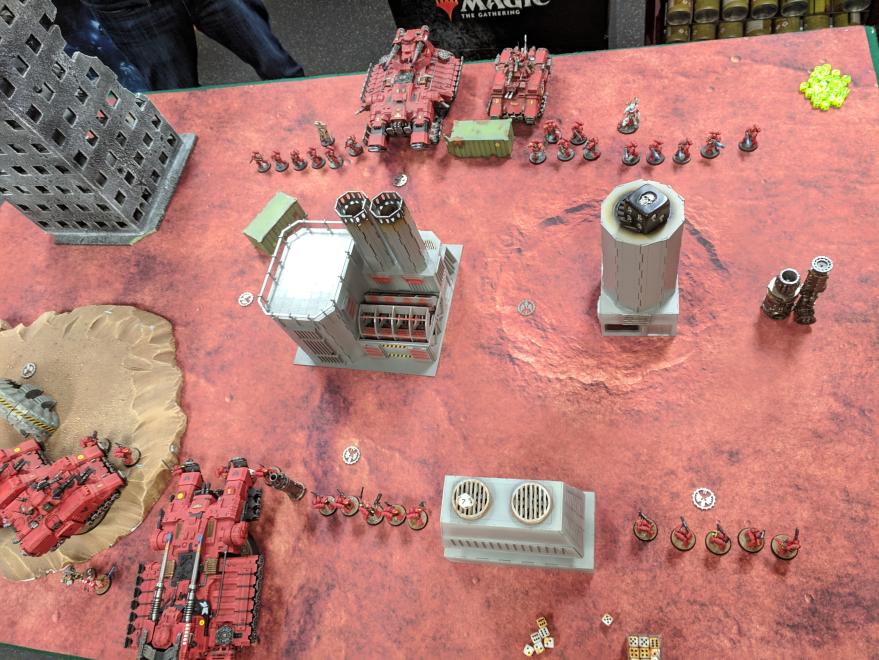
Tips and Tricks for Better Tables
Alright, let’s wrap up with some ways you can build better tables. There are a few things you can keep in mind that I think help out tremendously, and I’ve got some examples here.
Have Multiple LOS blockers in the middle of the table. I’ve said this several times already but it’s so important. Units need to be able to hide! In the table below, you can see a non-NOVA layout that puts several multi-story buildings across the middle of the table and gives units a way to approach. It’s a little light on deployment zone cover on the close side and the LOS blockers could be taller, but overall it does a good job at making sure units get get across the table in a protected fashion.
Limit the length of sight lines. The only thing I don’t love about the NOVA layout is that for Hammer & Anvil deployment you have two long sight lines that stretch the length of the board. One way to avoid this and create more interesting decisions is to place terrain at an angle rather than parallel to the table edges. This allows you to keep blocking LOS while also prevents a unit from being able to see the entire table as easily if it’s in cover. It also ensures that the maximum sight lines are limited in length. A typical game at my house will do this and while there will always be some sight-lines, there’s plenty of room to hide and approach with the benefit of a cover save.

Get some verticality in your games. Try and make height matter if you can. Allow units, especially INFANTRY, to get better vantage points, ideally with large, open surfaces that don’t necessarily prevent them from being assaulted.
Don’t be afraid to tell a story. Yeah, there’s a lot we can learn from tournaments and I like symmetrical layouts a lot, but they’re not always what we want. Don’t be afraid to work with your opponent to build a battlefield that looks cool and tells a visual story. Just make sure that you have blocked lines of sight and plenty of cover to tell the story with. The table below has lots of LOS blockers and plenty of cover, but it’s not even close to the NOVA layout and visually presents a very cool environment with lots of places for units to hide.
Final Thoughts
Now that you’ve been armed with this knowledge on how to build a better table, go put it into practice! Play some games, try new things out, and experiment with different layouts. Remember to place large, LOS blockers mid-table to mitigate first turn damages. And if you have any questions or comments, feel free to drop us a comment in the comments below or shoot us an email at contact@goonhammer.com. As always, we’d love to hear from you.

